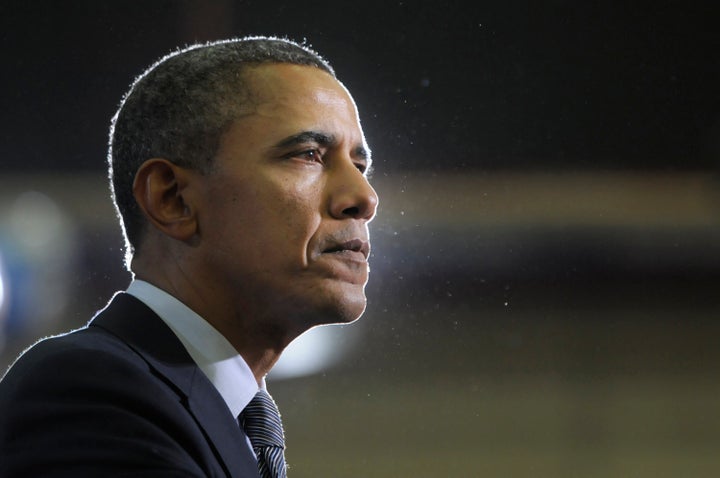
The $3.77 trillion budget proposal that the Obama Administration rolled out today contains mixed news for supporters of international aid. His plan includes boosts to some health and development programs, and overall higher funding levels for foreign assistance than what Congress has put forward. But his funding recommendation is still a decrease from previous years, and specific cuts he proposes to humanitarian programs are cause for concern.
Obama proposed $52 billion for the International Affairs Budget, or 150 account, of which $48.2 billion is in the "base" budget and $3.8 billion is in Overseas Contingency Operations (OCO). This overall funding level compares favorably to both the House and the Senate budget committee blueprints: The House and Senate have allocated significantly less for the base budgets, $38.7 billion and $45.6 billion, respectively.
But the administration's recommendation is lower than previous requests and past funding levels. In FY13, for example, President Obama requested $56.2 billion for the 150 account -- 7 percent more than he has requested this year. The FY14 request for 150 is also 11 percent lower than the $58.6 billion that was enacted just four years ago in FY10.
Digging in to the details of the budget plan, the mixed news continues. Health and development accounts would receive a boost under the president's plan, but there are serious concerns that the humanitarian accounts may be receiving steep cuts. As a result, there are concerns that the president's funding levels may not be adequate to meet global needs, especially as the world faces ongoing crises in places such as Syria and Mali.
On the positive side, the president's recommendations for health and development accounts are mostly higher than previous enacted levels as well as the post-sequestration levels for FY13. Under the president's plan, for example, Global Health ($8.3 billion overall) would receive a 3.4 percent bump over FY13, and several other accounts would receive 5 percent to 6 percent increases, including the Millennium Challenge Corporation, the International Development Association, the Global Agriculture and Food Security Program, the International Fund for Agricultural Development and the McGovern-Dole International Food for Education and Child Nutrition program.
However, the overall Development Assistance (DA) number, while higher than last year's at first blush, is actually somewhat inflated by the president's proposed food assistance reform. So while the overall DA allocation of $2.84 billion is 5 percent higher than in FY13, without the additional funding for food aid, it would be just $2.59 billion, 4 percent less than the FY13 funding level.
Perhaps most alarming are the proposed cuts in humanitarian programs. Overall, the four humanitarian-focused accounts of International Disaster Assistance, Migration and Refugee Assistance, Emergency Refugee and Migration Assistance and Food for Peace Title II would receive $1.5 billion less in FY14 than in FY13, even after sequestration.
· The Migration and Refugee Assistance (MRA) account would receive the largest cut, coming in $900 million lower than even the post-sequestration funding level in FY13 ($2.66 billion in FY13 compared with $1.76 billion in FY14).
· And while the overall number for the International Disaster Assistance account has been increased to $2.045 billion, it is in reality a smaller allocation than last year because it now includes $1.416 billion for food assistance and just $629 million for the primary function of the account, the Office of Foreign Disaster Assistance (OFDA). The OFDA allocation for FY13 was approximately $1.17 billion in FY13, so the FY14 funding level for OFDA would represent a $540 million cut.
· While the Emergency Refugee and Migration Assistance account is increased nearly nine-fold, it is a relatively small account, contributing just $250 million under the president's plan.
The last of these four humanitarian accounts, Food for Peace Title II, has probably received the most attention in the run-up to the budget's release. The administration has proposed reforms to U.S. food aid programs which would reportedly allow life-saving assistance to reach an additional two to four million people, as well as make gains in flexibility, timeliness and efficiency. The reforms would zero out the Food for Peace account and transfer funding from the jurisdiction of the Agriculture Appropriations Subcommittee to three USAID accounts under the jurisdiction of the State and Foreign Operations Appropriations Subcommittee. Leading NGOs, including InterAction, have endorsed a set of principles around food assistance reform. As Congress considers the President's proposal, these groups are urging lawmakers to retain the focus of the program on people suffering from acute and chronic hunger.
Now that the administration's proposal is on the table alongside House and Senate budget plans, it is up to Congress to hash out where spending will fall. In doing so, they must remember that poverty-focused development and humanitarian accounts make up less than 1 percent of the U.S. budget. Cutting these programs will not address the deficit, but supporting them is a wise investment and makes a real difference for people around the world working to improve their lives.